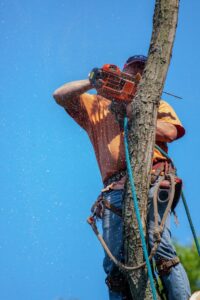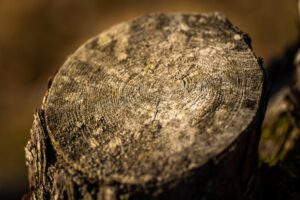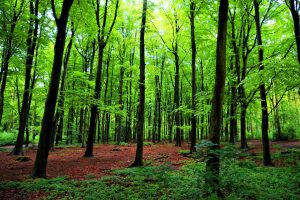Tree Trimming Near Me

Tree Trimming Near Me
Tree trimming, also known as pruning, is the process of removing dead, diseased, or overgrown branches from a tree in order to promote healthy growth and maintain its shape. This process is important for a variety of reasons including safety, aesthetic appeal, and the overall health of the tree. One of the most important reasons for tree trimming is safety. Dead or diseased branches can easily fall and cause damage to property or injury to people. Additionally, overgrown branches can grow into power lines, causing power outages or even starting fires. By removing these potentially dangerous branches, tree trimming can help prevent accidents and protect both people and property.
One important reason for tree trimming is aesthetic appeal. Trees that are overgrown or have unshapely branches can detract from the beauty of a yard or landscape. By removing these branches, the tree’s natural shape and beauty can be restored, making it an attractive addition to any landscape.
Tree trimming is also important for the overall health of the tree. By removing dead or diseased branches, the tree can focus its energy on healthy growth. Additionally, trimming back overgrown branches allows light and air to penetrate the tree’s canopy, which can help prevent the growth of mold and mildew. This can also help reduce the risk of pests and diseases that thrive in dark, damp environments. There are several different techniques that can be used when trimming a tree, depending on the size and type of tree, as well as the specific purpose of the trimming. The three main types of tree trimming are crown cleaning, crown thinning, and crown reduction.
Crown cleaning involves removing dead, diseased, or broken branches from the tree’s canopy. This helps to promote healthy growth and prevent the spread of disease. Crown thinning is similar to crown cleaning, but instead of removing branches, it involves removing a small portion of the tree’s canopy in order to allow more light and air to penetrate the tree. This can help to reduce the risk of pests and diseases, and promote healthy growth.
Crown reduction is the most drastic type of tree trimming. It involves removing a large portion of the tree’s canopy in order to reduce the overall size of the tree. This is typically done when a tree has grown too large for its location, or if it is causing damage to nearby structures. It is important to note that tree trimming should always be performed by a professional arborist. A professional arborist has the knowledge and equipment necessary to safely trim a tree, and can ensure that the tree is trimmed in a way that promotes healthy growth and prevents future problems.
Tree trimming is not only important for safety and aesthetic reasons, but also for the overall health of the tree. Regular tree trimming can help to prevent the spread of disease, reduce the risk of pests, and promote healthy growth. By working with a professional arborist, you can ensure that your tree is trimmed in a way that promotes its long-term health and beauty.
However, there are also some considerations and precautions to take when trimming trees, as improper pruning can cause more harm than good. For example, it is important to avoid removing more than 25% of a tree’s canopy in a single year, as this can shock the tree and cause it to become weak. Additionally, it is important to avoid topping a tree (removing the top of the tree) as this can cause the tree to become unstable, and can also cause an increase in the growth of water sprouts (shoots that grow from the base of the cut) which are weakly attached and are more prone to breaking.
When providing a proposal for a tree removal, an arborists also evaluate the site for stump grinding. While having the stump ground is not always necessary, many people prefer to deal with the stump at the same time as having the tree removed. Stump grinding allows the property owner to use the area where the tree once stood for laying sod or planting a flower bed. The stump grinder also produces mulch that has many uses around the yard. Here are answers to some common questions we get about stump grinding. Tree trimming is the process of removing dead, diseased, or overgrown branches from a tree to maintain its health and appearance. It is an important aspect of tree care, as it can help prevent damage to property and people, and can also improve the tree’s overall health and appearance.
There are several reasons why tree trimming is necessary. First, dead or diseased branches can pose a danger to people and property if they fall. Second, overgrown branches can interfere with power lines, sidewalks, and other structures. Third, trimming can help to promote the tree’s overall health by allowing sunlight and air to reach the inner parts of the tree, which can improve its growth and fruit production.
When it comes to trimming a tree, there are a few things to keep in mind. First, it is important to only remove branches that are dead, diseased, or overgrown. Removing healthy branches can harm the tree and can also lead to an unbalanced shape. Second, it is important to use the proper tools and techniques to avoid damaging the tree. Third, it is important to trim at the right time of year, as some trees have specific pruning needs and may be sensitive to certain types of trimming at certain times of the year.
One of the most important things to consider when trimming a tree is safety. Always wear protective gear, such as goggles, gloves, and a hard hat, and use a sturdy ladder or lift to reach high branches. It is also a good idea to work with a partner or to hire a professional tree trimming service to ensure that the job is done safely and correctly.
When it comes to the tools needed for tree trimming, there are a few basic items that you will need. A good pair of pruning shears, a chainsaw, and a pruning saw are the most essential tools. You may also need a ladder or lift, as well as a pair of safety goggles and gloves to protect yourself while working.
The first step in tree trimming is to identify the branches that need to be removed. Dead branches should be removed first, as they are the most likely to fall and cause damage. Diseased branches should also be removed, as they can spread their disease to the rest of the tree. Overgrown branches should be removed next, as they can interfere with power lines, sidewalks, and other structures.
Once you have identified the branches that need to be removed, it is time to start trimming. When trimming, it is important to make clean, precise cuts. Use a chainsaw or pruning saw to remove large branches, and use pruning shears for smaller branches. Make sure to cut the branch at a slight angle, so that water will run off of the cut. After the tree has been trimmed, it is important to clean up any debris that has fallen to the ground. This includes leaves, twigs, and branches. It is also a good idea to mulch the debris, as it can be used as a natural fertilizer for the tree.
When a tree becomes too big for a section or is in danger of falling because of disease or age, tree pruning or tree removal may be your only option. As tree pruning and arboriculture experts, the tree trimming crews mostly have everything you need to get the job done and offer both a one off service or ongoing maintenance programs, as required. Whether your objective is to promote tree growth or better fruit production, or to improve your view and let more sunlight in, our tree trimming crews are qualified and experienced to do the job. Pruning a tree in a confined residential section can require a great deal of skill. Key considerations need to be given to avoid damage to surrounding buildings, water pipes, power lines and existing vegetation. The experienced arborists have the equipment and the techniques to perform tree pruning services with minimal fuss and with safety in mind. All staff are trained, and completely up to date with modern arboricultural practices, with work carried out to AS 4373-2007 standard for pruning of amenity trees.
In conclusion, tree trimming is an essential part of tree care that can help maintain the tree’s health and appearance, and also prevent damage to property and people. It is important to use the proper tools and techniques, and to trim at the right time of year. Safety should always be a top priority when trimming a tree. With the proper knowledge and tools, you can keep your trees healthy and beautiful for many years to come. You must keep your trees and vegetation clear of the growth limit zone around overhead network power lines. Depending on the type of network line, the trees need to be trimmed when they reach a certain proximity to the line.
About West Jordan, Utah
West Jordan is a city in Salt Lake County, Utah, United States. It is a suburb of Salt Lake City and has a mixed economy. According to the 2020 Census, the city had a population of 116,961, placing it as the third most populous in the state. The city occupies the southwest end of the Salt Lake Valley at an elevation of 4,330 feet (1,320 m). Named after the nearby Jordan River, the limits of the city begin on the river's western bank and end in the eastern foothills of the Oquirrh Mountains, where Kennecott Copper Mine, the world's largest man-made excavation, is located.
Neighborhoods in West Jordan, Utah
Midvalley Terrace, Colonial Estates, Garbett Homes at Aurora Heights, Garbett Homes- Home Builder in West Jordan, West Jordan, Maples at Jordan Hill, Neighborhood Painting Services inc, Ivory Homes - Oakridge Park, Homes In West Jordan, Orchard Heights by Alpine Homes, Ivory Homes - Sequoia Cottages, Brinkerhoff Bluffs, Gansen Lane, Alpine Homes LLC, Avion Townhomes Apartments, Symphony Homes – Orchard Heights, Harvest Estates Park, Pine Needles at Gardner Village, District Coin Laundromat, Layers Bedding at Gardner Village, All Seasons Senior Living of West Jordan
Things To Do in West Jordan, Utah
Bus Stops in West Jordan, Utah to Truco Services, Inc.
Bus Stop in West Jordan City Center Stn (Bay A) West Jordan, Utah to Truco Services, Inc.
Bus Stop in Redwood Rd @ 8739 S West Jordan, Utah to Truco Services, Inc.
Bus Stop in 7800 S @ 2210 W West Jordan, Utah to Truco Services, Inc.
Bus Stop in Sugar Factory Road Station (Bay B) West Jordan, Utah to Truco Services, Inc.
Bus Stop in 4800 West Station (Bay B) West Jordan, Utah to Truco Services, Inc.
Bus Stop in 7800 S @ 3050 W West Jordan, Utah to Truco Services, Inc.
Bus Stop in Jordan Valley Station (Bay C) West Jordan, Utah to Truco Services, Inc.
Bus Stop in 7800 S @ 3208 W West Jordan, Utah to Truco Services, Inc.
Bus Stop in 7800 S @ 2320 W West Jordan, Utah to Truco Services, Inc.
Bus Stop in Redwood Rd @ 8001 S West Jordan, Utah to Truco Services, Inc.
Bus Stop in 7800 S @ 5746 W West Jordan, Utah to Truco Services, Inc.
Bus Stop in 7800 @ S 5011 W West Jordan, Utah to Truco Services, Inc.
Driving Directions in West Jordan, Utah to Truco Services, Inc.
Driving Directions from Nature Tree Specialists & Landscaping LLC to 4640 Commerce Dr, Murray, UT 84107, USA
Driving Directions from Integrity Tree Specialists & Landscaping LLC to 4640 Commerce Dr, Murray, UT 84107, USA
Driving Directions from Allmighty Tree Service to 4640 Commerce Dr, Murray, UT 84107, USA
Driving Directions from Twin Peaks Tree Care to 4640 Commerce Dr, Murray, UT 84107, USA
Driving Directions from Supreme Tree Experts to 4640 Commerce Dr, Murray, UT 84107, USA
Driving Directions from Utah Tree Co to 4640 Commerce Dr, Murray, UT 84107, USA
Driving Directions from Tim's Tree Care to 4640 Commerce Dr, Murray, UT 84107, USA
Driving Directions from Amen Trees to 4640 Commerce Dr, Murray, UT 84107, USA
Driving Directions from High Climbers Tree Care to 4640 Commerce Dr, Murray, UT 84107, USA
Driving Directions from Rent A Monkey Tree Service to 4640 Commerce Dr, Murray, UT 84107, USA
Driving Directions from Arbor+ to 4640 Commerce Dr, Murray, UT 84107, USA
Reviews for Truco Services, Inc. West Jordan, Utah
Marissa Burton
TruCo is a great company to work with for your commercial landscaping and snow removal needs! Rob is excellent to work with. He is very timely in providing quotes and has a lot of great feedback and suggestions to provide on what will look great, fit within your budget, and is knowledgeable on plants that will thrive with Utah's ever changing weather conditions. I have been impressed with TruCo's landscape maintenance as well as landscape projects which have had a quick turnaround time. I would highly recommend using TruCo!
Yvonne Olson
I experienced excellent all around service from landscape improvement design, scheduling and professional installation completed within the timeline we discussed. Rob, the manager does an excellent job of communicating, overseeing the install crew and making sure his customers are 100% satisfied with the job. Highly recommend TruCo for all landscaping needs.
Raymond Ferraro
Michael the tree guy is so smart. He knows all about tree removal, cutting and tree trimming services. Truco did amazing work for me. We had 16 very old and mature trees removed. The Truco team showed up on time ready to get the job done. They did amazing with clean up truly respect your property and your life. Communication was really good. They needed to move some things to get the stump grinder to our yard they put things back with no issues. Extremely professional and truly know what they're doing. If anyone is looking for professional tree removal or tree service you really should call Jason or Michael at Truco.
Heather Whiting
We hired TruCo to do a new install of sprinklers, sod, spigot, and bury downspouts. We even have a wifi transmitter for our control box we can access from an app on our phones! We absolutely love the professionalism and quality of their work!! Our sales rep Pete was the best to work with, we highly recommend him to anyone in the market for landscaping. It was awesome seeing the finished results and we're incredibly excited to enjoy our new space!
Jan Merideth
TruCo installed all of our plants, trees and shrubs, drip lines, and boulders. Then they installed our amazing beautiful firepit. We loved the results and they guarantee all plants and trees up to a year. They were great and easy to work with. They listened to our needs and wants and met them 100%. Our HOA sent us a letter telling us they appreciate all the work and the way our yard looks and let us know we added value to the property. Win/Win

